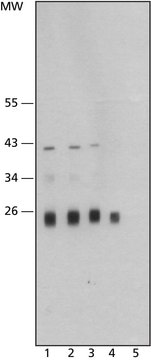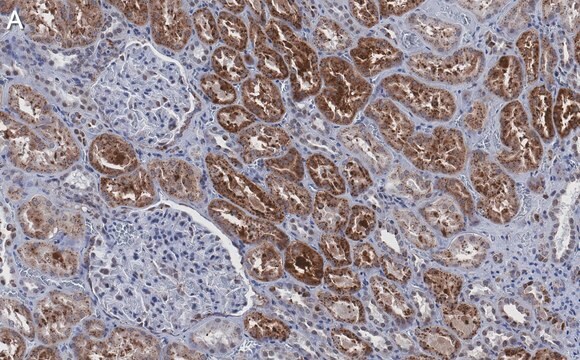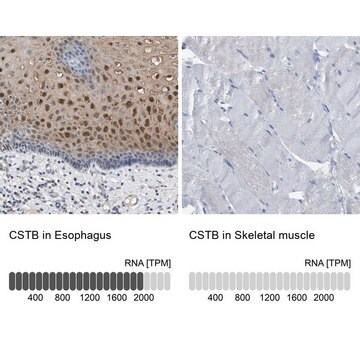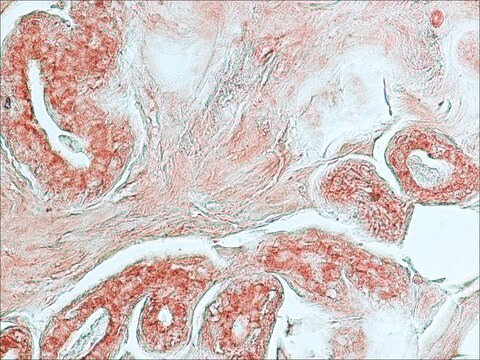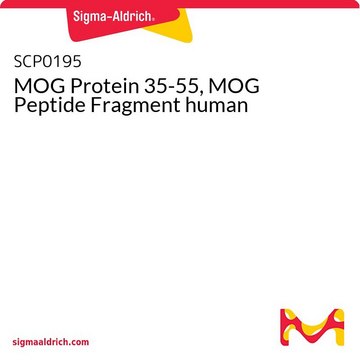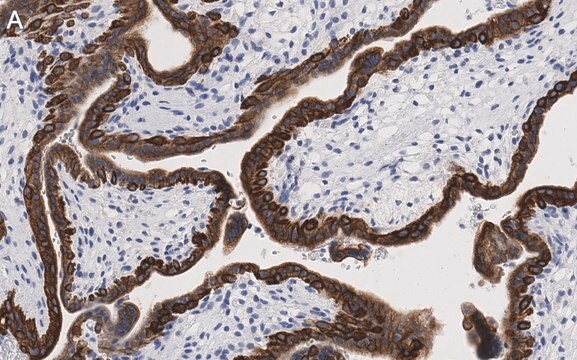C6243
Monoclonal Anti- Cathepsin B antibody produced in mouse
clone CB59-4B11, purified from hybridoma cell culture
Synonyme(s) :
Anti-APPS, Anti-CPSB, Anti-RECEUP
About This Item
Produits recommandés
Source biologique
mouse
Conjugué
unconjugated
Forme d'anticorps
purified immunoglobulin
Type de produit anticorps
primary antibodies
Clone
CB59-4B11, monoclonal
Forme
buffered aqueous solution
Poids mol.
antigen ~25 kDa
Espèces réactives
rat, human
Concentration
~1.5 mg/mL
Technique(s)
immunohistochemistry: suitable
indirect ELISA: suitable
western blot: 4-8 μg/mL using HCT-116 cells.
Isotype
IgG1
Numéro d'accès UniProt
Conditions d'expédition
dry ice
Température de stockage
−20°C
Modification post-traductionnelle de la cible
unmodified
Informations sur le gène
human ... CTSB(1508)
rat ... CTSB(64529)
Description générale
Immunogène
Application
Actions biochimiques/physiologiques
Monoclonal Anti-Cathepsin B specifically recognizes human1 and rat1 cathepsin B (~ 25 kDa). The antibody epitope resides within the peptide sequence EPGYSP which corresponds to amino acids 212-217 of human cathepsin B. The antibody does not cross react with the closely related lysosomal cysteine proteases: cathepsins L, H, K, S, V, and W.
Cathepsins significantly takes part in the immune response, by processing antigens into peptides for its presentation through MHC class II molecules.
Forme physique
Clause de non-responsabilité
Vous ne trouvez pas le bon produit ?
Essayez notre Outil de sélection de produits.
En option
Produit(s) apparenté(s)
Code de la classe de stockage
10 - Combustible liquids
Classe de danger pour l'eau (WGK)
WGK 1
Point d'éclair (°F)
Not applicable
Point d'éclair (°C)
Not applicable
Certificats d'analyse (COA)
Recherchez un Certificats d'analyse (COA) en saisissant le numéro de lot du produit. Les numéros de lot figurent sur l'étiquette du produit après les mots "Lot" ou "Batch".
Déjà en possession de ce produit ?
Retrouvez la documentation relative aux produits que vous avez récemment achetés dans la Bibliothèque de documents.
associated with suppression of angiogenesis
the Endo- and Exopeptidase Activities of Cathepsin B
Notre équipe de scientifiques dispose d'une expérience dans tous les secteurs de la recherche, notamment en sciences de la vie, science des matériaux, synthèse chimique, chromatographie, analyse et dans de nombreux autres domaines..
Contacter notre Service technique